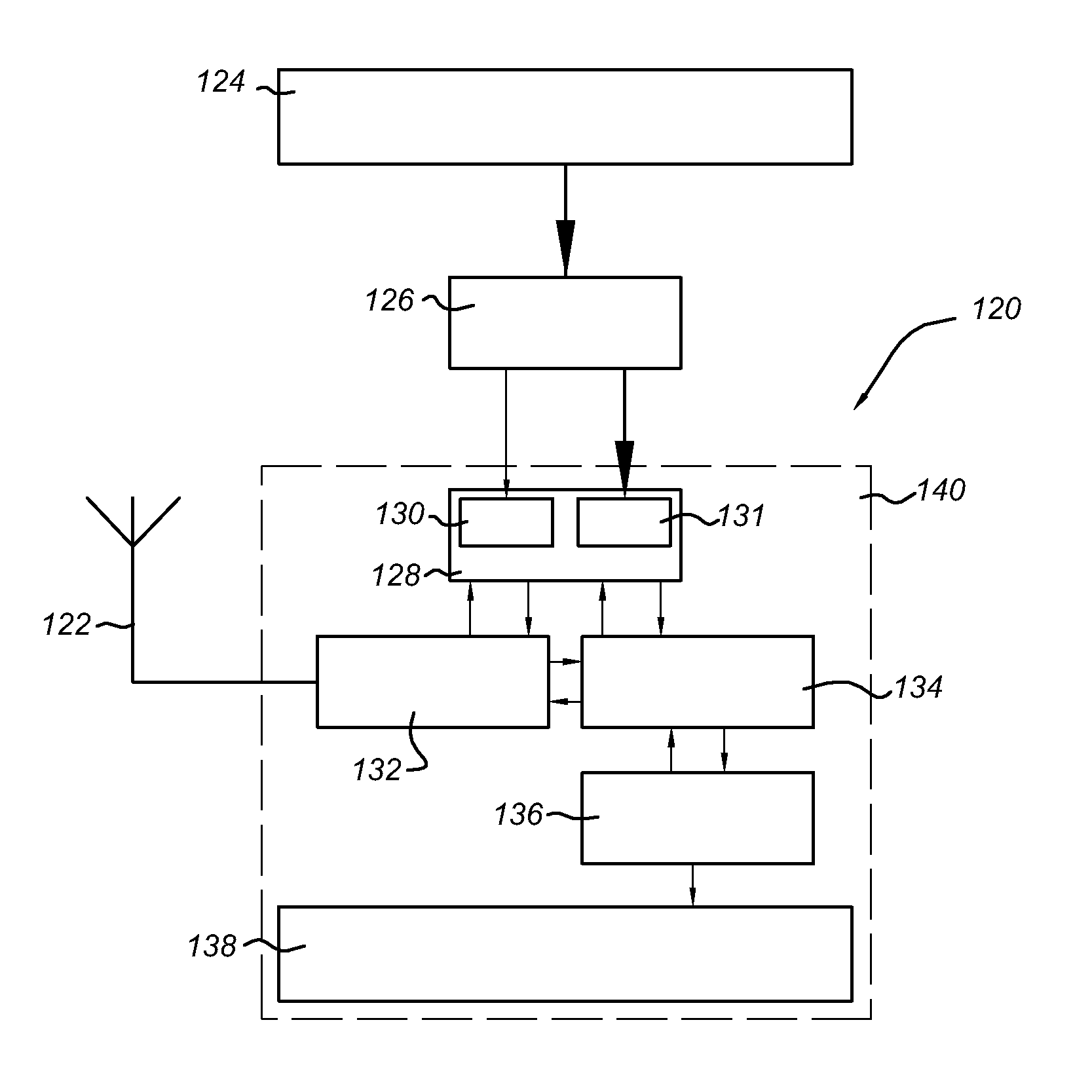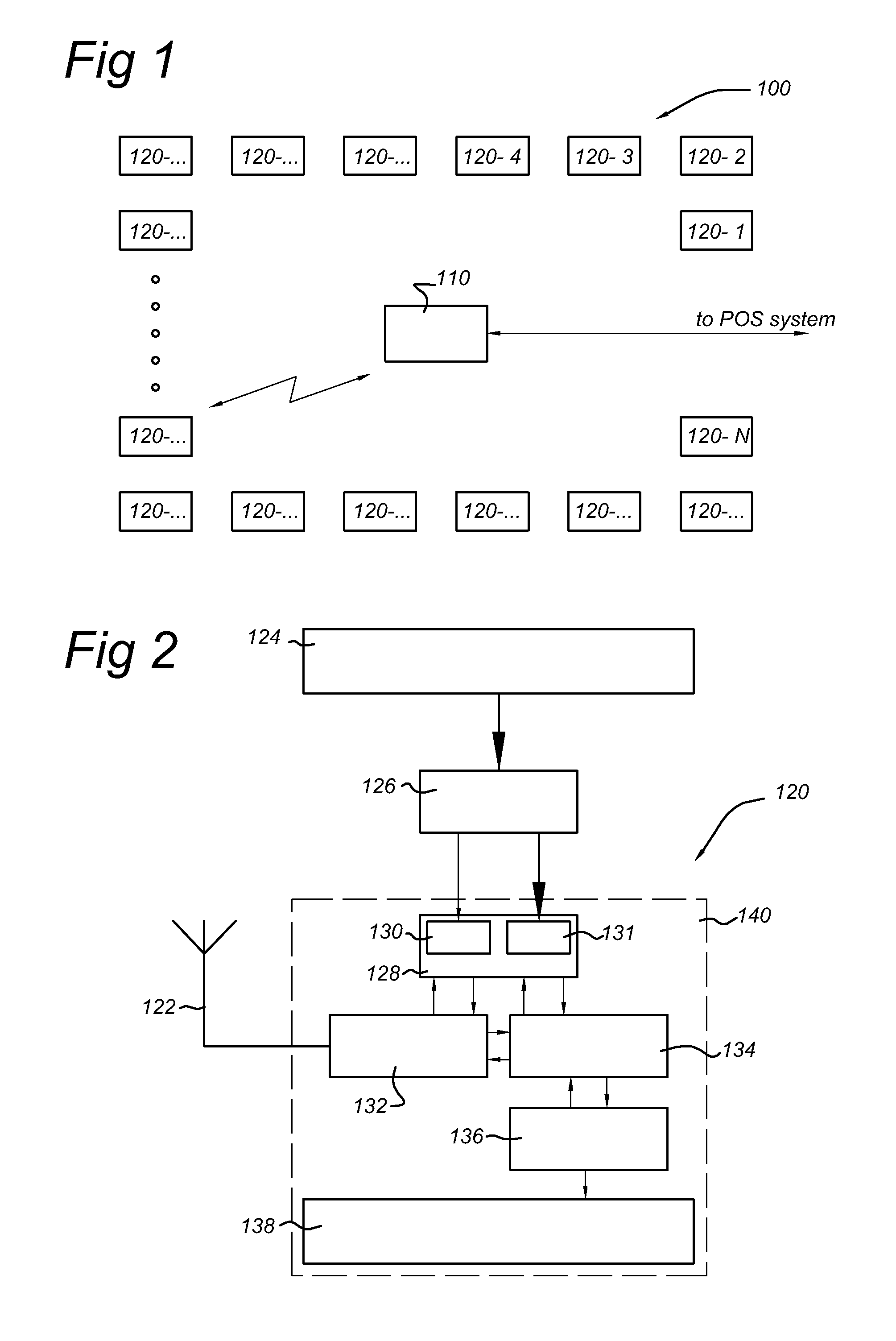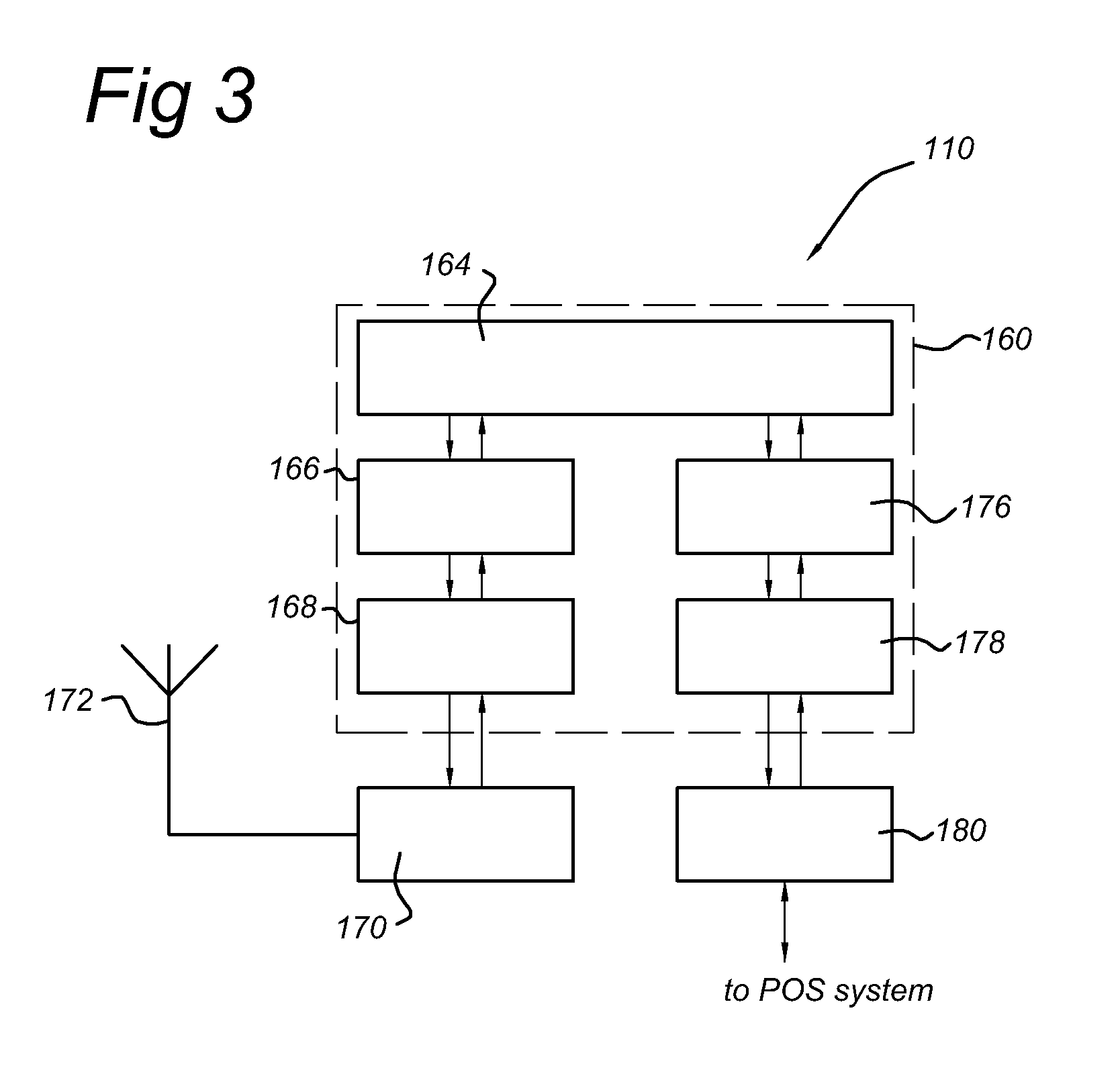End node and network coordinator using a CSMA based protocol
a network coordinator and end node technology, applied in the field of network components, can solve problems such as unknown delays, and achieve the effect of improving the random distribution of transmitting data packets
- Summary
- Abstract
- Description
- Claims
- Application Information
AI Technical Summary
Benefits of technology
Problems solved by technology
Method used
Image
Examples
Embodiment Construction
[0045]FIG. 1 illustrates an ESL system 100 according to the invention. The ESL system comprises a network coordinator 110, a point-of-sale (POS) system and a multitude of electronic shelf labels 120-1, 120-2, . . . 120-N. The network coordinator 110 communicates through a wireless link with the electronic labels 120-1, 120-2, . . . 120-N. The network coordinator has a (wired or wireless) connection to a POS system that includes a POS terminal and a POS server with a database. The POS system sends in case of new price data for an electronic label this information to the network coordinator. The network coordinator stores this information and will forward it to the electronic label in question at a later moment.
[0046]According to the invention, an electronic label 120- sends a data request packet to the network coordinator to check if new price data is available at the network coordinator from the POS system. In response to the data request packet, the network coordinator forwards a d...
PUM
 Login to View More
Login to View More Abstract
Description
Claims
Application Information
 Login to View More
Login to View More - R&D
- Intellectual Property
- Life Sciences
- Materials
- Tech Scout
- Unparalleled Data Quality
- Higher Quality Content
- 60% Fewer Hallucinations
Browse by: Latest US Patents, China's latest patents, Technical Efficacy Thesaurus, Application Domain, Technology Topic, Popular Technical Reports.
© 2025 PatSnap. All rights reserved.Legal|Privacy policy|Modern Slavery Act Transparency Statement|Sitemap|About US| Contact US: help@patsnap.com



